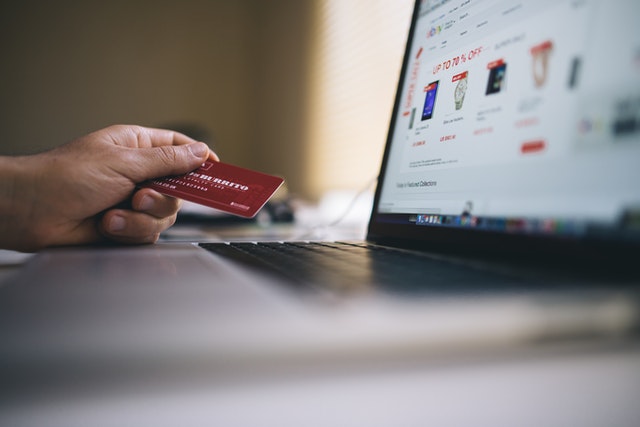Contents
Evolution of the retail industry
Human has a long relationship with trading. Retail markets have existed since ancient times when barter traders start exchanging goods. At this time the goods exchanged were specific, essential, and personalized. Then humans started to standardize mass production where goods were only available in areas around the shops and to whoever can afford them.
After that came the industrial revolution where factories started to employ a lot of workers to make mass production goods cheaper. Before factories take over distribution, goods were only available in shops near the customers. The only way you could buy was through these shops with very little choice.
With the advent of the supermarket, customers start to have more options and become more rigorous. Industries started to adopt automation where goods get even cheaper but less personalized. Since the industrial revolution, consumerism, income, standard of living and commercial investment have risen and companies manage to make brands reach overseas customers.
And now in the digital age, the internet gave birth to e-commerce and other innovative ways of shopping. Suddenly, buyers have even more choices than ever, and with that consumers gain more power while putting pressure on retailers and producers to satisfy their needs.
In today’s digital age, we started to generate an epitome of data about our tastes and habits. With the rise in data, advances in technologies like Artificial Intelligence (AI), Machine Learning (ML), and data analytics have started to become a reality. These technologies are used to process the data generated to find patterns in human habits and trends.
And as the world continues to digitalize and new breakthrough innovations see light regularly, it is estimated that shopping is going to transform more in the next 20 years than it has in the past 1,000. Adding to that the pandemic and all the crises the world is facing in 2022, the retail industry is having drastic changes.
Shopping is becoming a matter of clicks nowadays, consumers are looking for convenience and want everything to be as easy as possible. Instead of walking in the alley of supermarkets, if they find it hard to navigate a website, they can just move on to another one with a lot of ease.
The economy has become highly disproportionate and only has room for things that people truly need or want. The pandemic has accelerated digital adoption and people are going into retail stores or shopping malls only if they feel comfortable and for the experience. Retail store is no longer as essential as they use to be.
Then there is also the rise of conscious consumers where people are shifting toward locally made, ethically sourced, and sustainable products. People are becoming more and more conscious consumers thinking about the impact they have on the world. The big focus here is on health, sustainable fashion, hygiene, circular economy, climate change, and tackling fast fashion.

Technologies that are shaping retail industry
We love shopping. If you’ve ever wondered why people love shopping, the answer might surprise you. David Linden, a neurologist, explains that shopping triggers dopamine in the brain. This substance is part of what makes us happy and entertained. There are a lot of trends that are and will shape consumer shopping habits while also impacting retailers.
During this pandemic, the way we shop has evolved quickly. Shopping experiences are going through a radical shift right now and retailers have been forced to adapt and innovate. Brands that have understood and adapted are developing products and services to meet the changing needs of shoppers. And this revolution is driven by your data.
Retail in the future is likely to be more streamlined than ever before. The traditional retail model will continue to exist but a significant portion of it will be digital. Total global retail revenues were worth over USD 26 trillion in 2021 and are expected to reach USD 31.3 trillion by 2025. Global e-commerce sales account for USD 4.9 trillion in 2021 and are estimated to reach USD 7.3 trillion by 2025.
Mobile devices have greatly impacted the retail industry. It is estimated that there are more than 6.6 billion mobile phone users around the world. This number represents more than 80% of the world’s population. According to insider intelligence, mobile-related online purchases account for over USD 350 billion in retail sales by 2021 and are expected to be USD 728 billion by 2025.
This technology allows people to shop anytime and anywhere, avoiding the need to visit brick-and-mortar stores or carry a laptop. The growth of mobile e-commerce has influenced the future of retail, as it enables shoppers to do so from the convenience of their smartphones.
And with a lot of mobile devices circulating, social media users are also on the rise. Social commerce is another trend transforming the retail landscape. Social commerce occurs in social networks and is a natural extension of e-commerce. It has become incredibly popular and could be the most influential way to reach an audience.
There are more than 4.6 billion social media users around the world which is more than 58% of the world population. Every day, human activity generate 2.5 quintillion byte of data. And with the ever-growing number of new devices and the internet of things, the amount of data generated is expected to double if not triple.
Retailers are applying precision tools to the shopping pathway. For example, instead of relying on mass-market advertising, marketers are now sending mobile device coupons to increase conversions. They can also optimize location-based promotions. Retailers can even provide tailored offers for customers who have checked in to their stores on external platforms.

With so much information available, retailers can better serve their customers. The future of shopping no longer depends on mass-market advertising but on digital marketing. With data, retailers can better target specific customers based on their habits. And now we also have data brokers who are creating customer profiles that they sell to companies.
We are also moving toward neuromarketing where scientists are studying brain activity to better understand consumer behavior. And with live-stream shopping, retailers are digitally showcasing their products via video streaming to online consumers. China is the world’s largest market for e-commerce where sales were estimated at USD 2.4 trillion in 2021 and are projected to reach USD 3.6 trillion by 2025.
The hottest trend for people in China every night is to watch live shows hosted by influencers who recommend products on e-commerce and social app like Taobao. China is also the world leader in Livestream shopping where the industry is estimated at USD 600 billion compared to USD 25 billion in the United States.
Brands that can successfully leverage social commerce will have a big edge. Whether it’s a small startup or an established global B2C brand, Livestream shopping has the potential to revolutionize the retail world. Online shopping is taking the retail world by storm and has become the preferred method of shopping for most consumers.
A recent OECD report shows that hours spent shopping per person have decreased by 9% since 1960. The US Census Bureau reports that the average consumer now spends 20% less time shopping each week. Some experts attribute this decline to the growing disinterest in shopping or the fact that people can buy everything they need from the comfort of their own homes.
However, some argue that the shift in consumer behavior is not just due to new technologies; rather, the change in consumer habits is the result of societal changes. Many tech-savvy pundits touted the benefits of shopping online, including comparison shopping. As smartphones become increasingly smarter, shopping becomes easier with apps.
Mobile applications are also booming nowadays. According to Forbes, there was 8.9 million mobile application by the start of 2020. A brand that creates a community app can reach out to consumers in different ways. For example, Nike has created a community-based app called Nothing but Gold that allows GenZ consumers to directly shop for Nike products.
Another company, Express, empowers influencers to become “Style Editors” and rewards them with sales. These new trends are already shaping retail today. Adapting to these shifts and incorporating them into a brand’s digital strategy is key. Another reason why many consumers shop online is to save money.
Many consumers shop online to apply coupons, earn loyalty points, or spread payments without interest. Another popular reason to shop online is to avoid crowds and pressure to buy something we don’t need. This is especially true when it comes to buying electronics. Also shopping online allows consumers to compare prices.

With so much variety available, consumers are more discerning than ever before. Whether it’s an electronic gadget or a handbag, consumers prefer shopping online. Even if there are physical stores, most products are better priced online. In fact, one recent study found that 45% of consumers use deal-finding browser extensions and plug-ins.
In addition to saving money, consumers can choose from more products and brands than they could in physical stores. This gives consumers more choice and flexibility. Once they make a purchase, they feel confident that they made the right decision. One-third of consumers prefer shopping online over a physical store. With innovation in logistics, goods are arriving faster at customer doorsteps.
The rise of online shops has changed the shopping landscape. Many of today’s biggest stores have ceased to have physical stores. However, they have come back as an alternative for some shoppers. The biggest retailers have made home delivery a popular shopping option. The future of retailing looks bright.
Future of Retail
Technology is blurring the lines between online and offline. People are becoming tech-savvy and stores are now relying on digital platforms to satisfy the consumer’s increased appetite for digital. Retail platforms are using technology incorporated with artificial intelligence and data analytics to make shopping experiences safer and more accessible.
The future of retail is fast approaching, and the technology to make this possible is already available. Although consumers will still be going to physical stores, their shopping habits are likely to change. Big markets will continue to support flagship stores, and they’ll integrate online options as another department.
Self-service shopping and the internet promise to make these tasks faster and easier. However, the future of online shopping will depend on the development of machine learning algorithms to learn from data generated. Companies are using data analytics and machine learning to understand their customers better. Shopping will be more data-driven.
And by leveraging customer trends, brands can better predict what customers are most likely to purchase. Fashion forecasting is becoming a science. While traditional brick-and-mortar retailers are re-evaluating their physical store experience, smart retailers are turning to technology to create a more personalized, immersive shopping experience.
The clothes industry is quickly evolving and incorporating technology from Augmented Realit (AR) and Virtual Reality (VR) to their dressing rooms to using smart fabrics. From robots that sew and cut fabric to algorithms predicting style trends and smart clothes, everything is facing a makeover.
In fact, some savvy brands are enhancing the online experience for consumers. With the help of VR and AR, shoppers can imagine 3D models of products they’re interested in. The Swedish home furnishings retailer IKEA has implemented this feature. Meanwhile, live commerce enables shoppers to watch product demonstrations and purchase items on their mobile phones.
And incorporating Extended Reality (XR) into a physical store environment will allow customers to interact with products more engagingly. XR technologies such as virtual reality headsets and magic mirrors are being road-tested by retailers, while new technologies such as self-service checkouts are making shopping more convenient and enjoyable.
The use of Augmented Reality can allow customers to simulate in-person shopping experiences from the comfort of their homes. It will also enable customers to see how a product might look on them before making an order. With AR, customers can click on a product and instantly see it overlaid on them.
Customers can even view products from every different angles with an interactive 360-degree experience to get a better idea of the value that the product can offer. These advances will eventually create a retail Utopia where people can shop on the go, with a broader variety of products and services. And we may even shop for clothes in the metaverse.
Amazon is an online retail giant but is also making moves to compete with offline retailers, including acquiring Whole Foods. In Amazon Go, consumers can pick up anything and put it in their basket then leave the store after purchasing what they want. Payments are processed automatically using an app.
More specifically, customers can walk into the store and grab the goods then walk right to the checkout with the goods. Everything is scanned once picked and the customer account is the link to the app with everything deducted directly. The app allows customers to check out without touching a screen or swiping their credit card.
The use of RFID (radio-frequency identification) technology helps track the inventory, understand product life cycles, and more. In addition to enabling retailers to collect detailed information. Amazon Go stores have a collection of ceiling cameras and shelf sensors that identify items and place them in a virtual shopping cart.
Artificial intelligence will help to read what is placed inside a shopping trolley. The future of grocery shopping is drastically going to change for both stores and customers. Where operational expenditures of hiring cashiers and conducting inventory management for retailers will reduce. In contrast, customers will focus primarily on making shopping easier and more personalized.
We are already moving toward a cashless society. Retailers are expected to start focusing on contactless payment methods. Cryptocurrency may also become a common payment option, especially among Generation Z and Millennials. In the future brands will need to accept as many payment options as possible.
Cryptocurrencies may begin to stabilize over the next decade, making them more attractive payment options for large companies. On top of that, cryptocurrencies use blockchain technology to record transactions. The retailer can implement blockchains in their activity to increase the efficiency of their operation.
Blockchain will make it difficult or impossible to change, hack, or cheat the system. According to Grand View Research, the global blockchain technology market will reach USD 1,431 billion by 2030. As people’s behaviors change, so does the role of technology. Technology makes shopping more personalized and convenient. And in the future, we may well see drone delivery.
Smart objects can monitor contents and automatically order items when they run out. But while technology has facilitated the mainstreaming of shopping, it is not yet the sole cause of these changes. Instead, it helps retailers understand consumer behavior and make faster, more informed purchasing decisions.
However, with the increasing amount of data generated every day, there are a lot of trends in cybersecurity right now. Cyberattacks have more than tripled during the last couple of years. With consumers providing personal detail about themselves while shopping on the internet, online retailers will have to invest heavily in cybersecurity to protect consumer data and maintain digital trust.
Technology shapes the online shopping experience and influences the way we interact with sellers. Technology has fundamentally altered the relationship between consumers and merchants. It has allowed marketers to make better use of their online presence, enhance brand reputation, and increase their equity.
Technology empowers consumers and forces all firms to adapt. In turn, consumers have increased their purchasing power. While consumers are empowered with technology, all businesses need to adapt to the latest trends. This includes rethinking how to use technology and make their physical store more convenient for their customers.
Consumers are driving the changes in how we shop. Instead of driving to a brick-and-mortar store to browse products, they’re utilizing apps to complete their purchase. While traditional brick-and-mortar stores are losing market share, online shopping is transforming the way consumers shop and experience brands.
These innovations will likely shape the future of retail. It’s safe to say that the future of retail looks remarkably promising. And if these future technologies continue to improve our lives and our shopping habits, the future of retail is only going to get better.

0 Comments